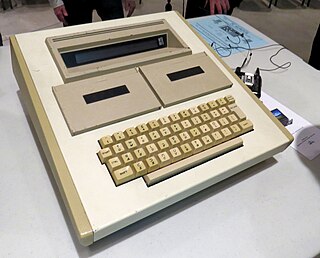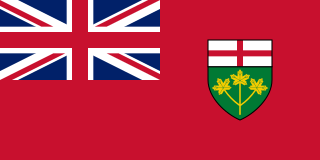Clipper is an xBase compiler, which is a computer programming language, that is used to create software programs that originally operated primarily under MS-DOS. Although it is a powerful general-purpose programming language, it was primarily used to create database/business programs.

Kenneth Eugene Iverson was a Canadian computer scientist noted for the development of the programming language APL. He was honored with the Turing Award in 1979 "for his pioneering effort in programming languages and mathematical notation resulting in what the computing field now knows as APL; for his contributions to the implementation of interactive systems, to educational uses of APL, and to programming language theory and practice".

The MCM/70 was a pioneering microcomputer first built in 1973 in Toronto, Ontario, Canada and released the next year, making it one of the first microcomputers in the world, the second to be shipped in completed form, and the first portable computer. The MCM/70 was the product of Micro Computer Machines, one of three related companies set up in Toronto in 1971 by Mers Kutt. It is considered by some historians to be the first usable personal microcomputer system.

Roger D. Moore was the 1973 recipient of the Grace Murray Hopper Award from the Association for Computing Machinery (ACM). It was given: "For their work in the design and implementation of APL\360, setting new standards in simplicity, efficiency, reliability and response time for interactive systems."
K is a proprietary array processing programming language developed by Arthur Whitney and commercialized by Kx Systems. The language serves as the foundation for kdb+, an in-memory, column-based database, and other related financial products. The language, originally developed in 1993, is a variant of APL and contains elements of Scheme. Advocates of the language emphasize its speed, facility in handling arrays, and expressive syntax.

Roger Hui is a computer scientist and codeveloper of the programming language J.
The Howard Hughes Corporation is a major real estate development and management company based in Dallas, Texas. It began as part of the oil drilling tool business founded by Howard R. Hughes, Sr., in 1913, which under his son Howard Hughes, Jr., diversified into real estate development. The real estate operations became a separate company, which was acquired by The Rouse Company, which in turn was acquired by General Growth Properties (GGP). In 2010, GGP spun off The Howard Hughes Corporation as a separate company.
Arthur Whitney is a Canadian computer scientist most notable for developing three programming languages inspired by APL: A+, K, and Q, and for cofounding the U.S. company Kx Systems.
IPSANET was a packet switching network written by I. P. Sharp Associates (IPSA). Operation began in May 1976. It initially used the IBM 3705 Communications Controller and Computer Automation LSI-2 computers as nodes. An Intel 80286 based-node was added in 1987. It was called the Beta node.

Tally was a leading American manufacturer of printers.

Eugene Edward McDonnell was a computer science pioneer and long-time contributor to the programming language siblings APL and J.
Scientific Time Sharing Corporation (STSC) was a pioneering timesharing and consulting service company which offered APL from its datacenter in Bethesda, MD to users in the United States and Europe.
Shared Variables are a feature of the programming language APL which allows APL programs running on one processor to share information with another processor. Although originally developed for mainframe computers, Shared Variables were also used in personal computer implementations of APL. Shared Variables could be used to control peripheral devices, or to communicate with external files, database management systems, or other users. Shared Variables were first introduced by International Business Machines Corporation (IBM) in their APL.SV software product in 1973, and are still available as of 2017, in APLs from IBM and Dyalog, for the operating systems Linux and Windows.
The programming language APL uses a number of symbols, rather than words from natural language, to identify operations, similarly to mathematical symbols. Prior to the wide adoption of Unicode, a number of special-purpose EBCDIC and non-EBCDIC code pages were used to represent the symbols required for writing APL.
Merck & Co., Inc., d.b.a. Merck Sharp & Dohme (MSD) outside the United States and Canada, is an American multinational pharmaceutical company and one of the largest pharmaceutical companies in the world. Merck is incorporated in New Jersey.
CP-6 is a discontinued computer operating system developed by Honeywell, Inc. in 1976. It was a backward-compatible work-alike of the Xerox CP-V fully rewritten for Honeywell Level/66 hardware. CP-6 was a command line oriented system. A terminal emulator allowed use of PCs as CP-6 terminals.
Robert (Bob) Bernecky is a Canadian computer scientist notable as a designer and implementer of APL. His APL career started at I.P. Sharp Associates (IPSA) in 1971.








